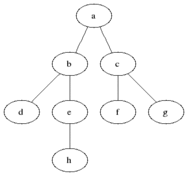Advent of Code is a great way to practice coding in my opinion and you should probably give it a try. 🚀
I have never really shared code on github, probably because I am afraid my code could be crap 💩. But how am I supposed to get better if I don't show my code to others and hear their opinions? So feel free to give any kind of feedback.
I won't be able to solve/share all or even the majority of the challenges here but hey some is better than none. 😎
Feel free to checkout this repo and run the tests with
npm install
npm run test
I solved the first part of day 1 in Chromes developer tools with the following expression:
document
.querySelector('pre')
.innerText
.split('\n')
.slice(0, 1)
.reduce((acc, curr) => acc + Math.floor(parseInt(curr)/3) - 2, 0)When I read the text for part two I was slightly confused at first but luckily advent-of-code always provides example input and output. This makes it a perfect fit for TDD and I quickly set up jest and threw TypeScript in there as well because why not, types are fun. 🤓
Checkout the calcFuel function and the tests. I chose the recursive approach even though I seem to remember from university that the iterative solution would be more memory efficient, not that this matters for this example anyway. Just a thought, how did you solve it?
Instant throwback to assembly coding in university.
Checkout the runIntcodeProgram function and the tests. I am not a big fan of that nested loop to find the "noun" and "verb". What is your take on this one?
What a fun riddle! I could solve it but my solution is not very performant, it takes about 75 seconds to get the result. I create an array with the coordinates for both wires and then start to compare those arrays to find the intersections. Checkout my code and the tests. Did you get this done in a more performant way? Let me know how!
My first thought was to validate the passwords (numbers) with a regular-expression and it's probably possible somhow 🤔(feel free to show me how). I ended up taking a different route with a function that validates each password within the range. Checkout my code and the tests.
I finished day 5 but the code is pretty spaghetti 🍝 and I'm having a hard time making it cleaner and more functional. Maybe I will end up just providing that solution anyway.
What I don't like: I'm using a pretty big switch-case statement and when I tried to get rid of that, I started learning about replacing switch-case statements with object-literals which makes sense to me because the mentioned problems in the article like forgetting the break; statement in one of the cases really caused me to debug for longer than it should have. Some people argue that you should not replace your switch-case statements. What is your opinion on this?
It took me way to long to realise that this is a tree datastructure. But I finally figured it out. 😅
We simply need to traverse the tree to get the sum of the level of every nodes. An algorithm to traverse a tree is BFS (breadth-first-search).
BFS in a nutshell:
This was a really challenging puzzle for me. I didn't struggle to explain BFS back in university because it's obviously not really all that complex. Looking at a problem or puzzle and realizing what datastructure it is/uses and what algorithm would be useful to solve it, is a whole different ballgame in my opinion.
I implemented the non-recursive BFS by utilizing a queue, check out my code and my tests. I believe the recursive implementation would be just as fine in this case. Probably this puzzle can even be solved using a depth-first-search since we have to go through every node anyway. How did you solve this puzzle?
